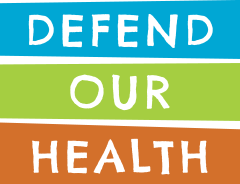“Everywhere chemicals” in organic products, conventional products, baby formula – unsafe supply chain
September 20, 2023 |
Chemicals known to harm pregnant women and children were found in cheese powders, formula, milk and cooking oils
What happened to Annie’s former commitment to eliminate phthalates that may be present in food packaging materials and food processing equipment?
Portland, ME — A new scientific report co-authored by Defend Our Health and published in the Journal of Exposure Science and Environmental Epidemiology found a class of chemicals called ortho-phthalates, commonly known as phthalates, in a wide range of food categories, including in popular children’s’ foods and organic products.
Phthalates are a type of plasticizer, which are chemicals that are used to make some plastics, especially PVC and synthetic rubbers, more flexible. They’re found in everything from food service gloves, tubing used in dairy operations, and food industry conveyor belts. They are linked with disruption to the endocrine system, which regulates the body’s hormones; young children and pregnant people are particularly sensitive to exposure to phthalates, even at very low concentrations. In fact, since 2017, the U.S. Consumer Product Safety Commission has restricted 8 ortho-phthalates in products that are intended for use by children and infants.
“Exposure to these chemicals continues to be a cause for concern, and especially should be so for parents and caregivers,” said Dr. Kurunthachalam Kannan, senior author of the article. “One of these chemicals, for example, DEHP, on the list of restricted phthalates in the US and the EU, was present in every product that we tested. That discovery alone is a concern when we think about the cumulative impacts of chemicals in small children and pregnant individuals.”
In order to better understand how food can expose families and children to phthalates and other plasticizers, a team of researchers from NYU School of Medicine, the Ecology Center, and Defend Our Health tested 71 food products for 21 different plasticizer chemicals. The researchers tested foods commonly consumed by children and babies, including milk, infant formula, cheese powders from macaroni and cheese kits, and cooking oils. The products also covered both organic and conventionally grown products, as well as foods that are often considered healthy, like less processed choices including cold-pressed avocado and olive oils.
Annie’s Homegrown had the right idea back in 2021. Defend Our Health was thrilled to secure a commitment from Annie’s following a 2017 study that the organization funded that revealed the existence of the chemicals in their products. At the time, the company provided a statement in the FAQ section of Annie’s website specifically addressing phthalates with clear plans to work with their suppliers to eliminate the chemicals from the packaging and equipment that produces the cheese and cheese powder in their macaroni and cheese. “The company chose at the time to be a market leader on this issue, but recently the statement has been removed from their website. We have been in communication with General Mills, owner of Annie’s Homegrown, about this and they have agreed to post a revised statement to their website. Unfortunately, they have yet to do so.
“Despite Annie’s commitments in 2021, we found comparable levels of plasticizers in their products that are currently on the market,” said Dr. Roopa Krithivasan, co-author of the report and director of research at Defend Our Health. “It’s very disappointing that they haven’t held to their commitments, and they don’t seem to be prioritizing this issue.”
Perhaps the greatest surprise of the report was that certified organic products and unrefined oils (frequently marketed as healthier options) had statistically higher levels of total plasticizers than conventional products and refined oils, respectively. In fact, the highest levels of total plasticizers were found in oils that were less processed, organic, or both. Within the milk and cheese powder categories, the highest levels of total plasticizers were found in samples that were certified organic.
“When we think of the marketing of these products and the target consumers, we think of individuals who are assuming they are purchasing ‘cleaner’ products and potentially ‘buying their way out of the problem,’” said Taylor Moore, senior director of communications at Defend Our Health. “But when it comes to phthalates, which have been popularly referred to as the ‘everywhere chemical,’ as of right now, there is essentially no way out. The burden needs to be on the regulating bodies and the voluntary actions of corporations who should put consumers first; they need to do something about it.”
So where are all of these plasticizers coming from? The authors explored the possibility of food packaging being a source of phthalates, but levels of plasticizers in the food packaging did not explain the concentrations of these plasticizers in the food products. The authors conclude that food processing equipment like hoses, tubing, conveyor systems, and holding tanks, and food handling gloves can also be a significant source of plasticizers in foods.
What is clear is that, in spite of policies that are intended to reduce and ideally eliminate human exposure to phthalates, they are still found in many foods. The impacts are especially significant for infants and children. Nearly 17% of all US infants are exclusively formula fed, and most consume at least some formula. Black families in particular are more likely to use formula, potentially increasing Black infants’ exposure to endocrine disrupting plasticizers. Additionally, many novel replacement plasticizers are increasingly found in food products and the health impacts of these replacement chemicals remain poorly understood.
“We need stricter regulatory strategies that completely eliminate known endocrine disruptors like ortho-phthalates, and ensure that new plasticizers entering the market are completely safe for human consumption before they are found throughout our food systems,” said Dr. Krithivasan. “If we are simply satisfied with our current regulations, some of our most vulnerable populations, namely children and infants, will continue to be harmed.”
